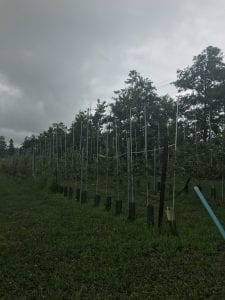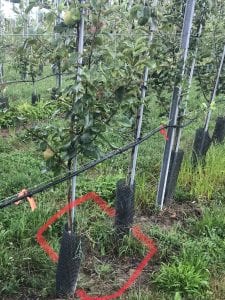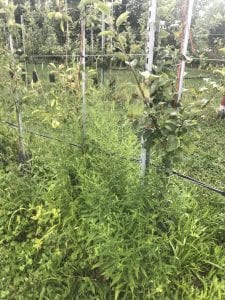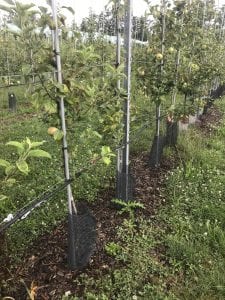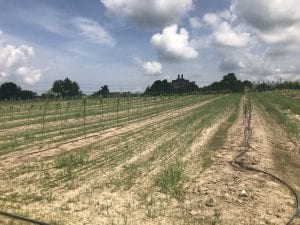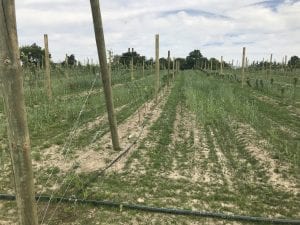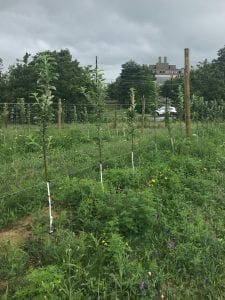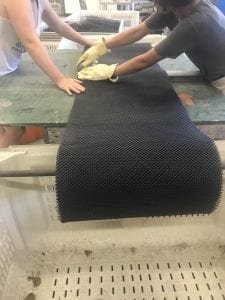One of my favorite parts of this internship has been going to the National Apple Collection at Cornell AgriTech (formerly the Agricultural Experiment Station) in Geneva, NY. Cornell Orchards do have a variety of apples with their own interesting characteristics (like the Golden Russet’s flesh and Honey-crisp’s coloring when nutrient deficiency arises) however, these trees have been selected due to beneficial characteristics to dessert, cooking, and cider apples. Some apple varieties are not as economically important, but could have unknown traits or simply have morphological features that make them interesting to look at. My internship at Cornell Orchards gave me the opportunity to view apple varieties that might not make the cut to many orchard sites, and test unknown varieties that may work well for hard cider production. Before this internship, when I pictured an apple tree, I pictured a common gala or red delicious apple tree, but now I think of apples as a variety of colors, shapes, sizes, heights, tastes, and more. I had no idea the AgriTech collection was so close to Cornell, but it is very interesting to see each variety progress and ripen.
Here’s a peek at just a few different traits I saw when I was searching for the latest and greatest hard cider varieties.
This apple variety dropped all its fruit before July 26. This is much earlier than when growers often desire fruit to ripen. The optimal season is around September-October.
This variety has serious sunburning. This variety would not be suited for dessert purposes, as consumers would likely not tolerate this flaw.
This variety had cherry sized fruit. This variety would be difficult to juice and probably not desirable to eat due to volatile levels.
 This apple has water core. Some varieties develop water core due to environmental conditions. Water core can be seen as a disorder or a benefit–if stored or used as dessert apples, water core can develop an off aroma and might look undesirable to consumers. However, in cider apples, it could be beneficial as it increases sorbitol content, increasing the taste of sweetness. In certain parts of the world, this trait is considered a delicacy, but many consumers in the US would shy away from apples with water core due to lack of familiarity.
This apple has water core. Some varieties develop water core due to environmental conditions. Water core can be seen as a disorder or a benefit–if stored or used as dessert apples, water core can develop an off aroma and might look undesirable to consumers. However, in cider apples, it could be beneficial as it increases sorbitol content, increasing the taste of sweetness. In certain parts of the world, this trait is considered a delicacy, but many consumers in the US would shy away from apples with water core due to lack of familiarity.
These are some of the apples we brought back to test starch content, firmness of the flesh, and to juice to create cider. Each is unique and could bring different characteristics to our cider tests!





